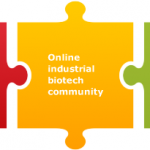Sustainability and Participation in the Bioeconomy: A Conceptual Framework for BE-Rural
This report outlines the conceptual framework of BE-Rural and provides practical guidance to the design and implementation of the five regional Open Innovation Platforms (OIPs) within BE-Rural. This conceptual framework aims to provide guidance regarding the overall ambition of BE-Rural, and the foundations by which the project will operate throughout its duration. The first part of this document describes the context, objectives and regional focus to be taken within the project. The second part outlines key concepts and founding principles that lay at the heart of the project. Following this, the conceptual framework of BE-Rural is presented and discussed.
Overall, the founding principles that lay at the heart of BE-Rural include the principles of co-creation, openness and inclusiveness, sustainability and transparency. These are incorporated into the key concept of the Quintuple Helix Approach, in which knowledge and innovation generated by key stakeholders from policy, business, academia and civil society are placed within the larger frame of the environment. Supporting this, the Action Research Approach ensures that reflection is integrated throughout all stages of project work.

